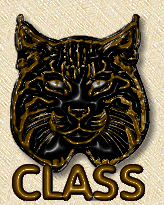Norwegian Forest Cat
Temperament:
*Reserved and Self-Contained
*Good Hunter
*Playful
*Resourceful
"This cat craves company, but only on its own terms."
Norwegian Forest Cats are extremely friendly and make marvelously intelligent pets- as
long as they have lots of attention and plenty of room to play. They are excellent hunters
and are devilishly good at figuring out how to open doors. |
| Head: Nearly equilaterally triangular; long, wide nose; full cheeks |
| Eyes: Large, wide set, almond shaped |
| Ears: Medium long; set high on head; almost pointed, sometimes lynx-tipped |
| Body: Medium to large; powerful appearance; full chest |
| Coat: Long, water resistant topcoat; thick, wooly underfur |
| Tail: Long, flowing; equal to body length |
| Patterns: Nearly all colors and patterns |
Breed History: The old Norse sagas speak of huge cats that stalked the cold northern forests-
cats so large and heavy that even the great god Thor couldn't lift them. Were these
legends inspired by the Norwegian Forest Cat?
Certainly it's not quite as large as the felines featured in the sagas, but the Norwegian
Forest Cat is massive indeed, with a long, luxurious coat that gets even heavier in the
cold winters, tufted ears, a full ruff and long powerful legs. Norwegian Forest Cats have
special claws that enable them to climb rocks as well as trees, and a water resistant
outer coat that dries in a few minutes after a drenching. Clearly, these cats are designed
to thrive in the cold, harsh climates of the far north. It is very easy to picture
Norwegian Forest Cats traveling with the Vikings, who may, in fact, have brought them to
Scandinavia from England. Their lineage has also been linked to Angora cats that escaped
from trading shiips from the Middle East and to Siberian Forest Cats that found their way
across the tundra to Norway.
Whatever their mysterious origins, Norwegian Forest Cats lived mostly quiet lives as
farmyard cats until the 1930's, when enthusiasts began to show them. After WWII they were
in danger of becoming extinct because of inbreeding with domestic cats. Then, in the early
1970's, Carl-Fredrick Nordane, a former president of the Norwegian Cat Association,
championed the breed. As a result of his work, this magnificent cat gained international
status 1in 1977 and quickly gained popularity. |
| Additional Notes: |

|
|

|
|

|

|

|
|